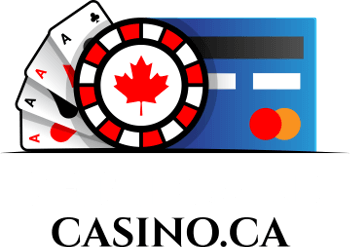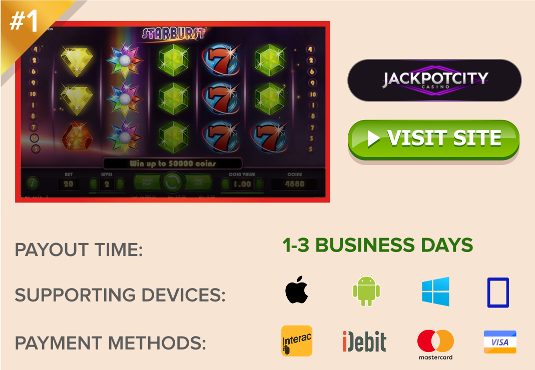How to Play Badugi Poker Online

Badugi (a.k.a. Badougi, Padooki, or Paduki) is a unique poker game found largely in the online realm. It is a lowball poker variant, closely related to 2-7 Triple Draw, except that players get only 4 cards. This notably alters the rules of hand development, making it more difficult for the average poker player to acclimate to the game.
How to Play the Poker Game Badugi
Badugi is best suited to experienced poker players who are looking for a more challenging game to test their skills. As a 4-card, lowball, triple draw poker game, professional players tend to like it for its uniquely strategic nature. The ensuing paragraphs will teach you how to play Badugi poker, online or as a home game among friends.
- Object of Badugi: The object of the game is to achieve the lowest poker hand. Aces are low and straights don’t matter, but pairs and matching suits count against you…
- Blinds & Betting: Badugi is a “blind” poker game, most often played in Fixed Limit format. There are four betting rounds, with three draw phases in between…
- Order of Events: In this simple walk-through of a Badugi poker hand, you’ll learn the basic order of events, from the placement of blinds to the final showdown…
- Badugi Strategy: Playing by the rules is hard enough. Playing the ‘smart way’ is crucial to developing a positive ROI. There are a number of things to consider…
1. Learn How to Play Badugi Poker |
|
Badugi is played with a single, 52-card deck. Any reasonable number of players can join in the game. Note that, with three draw phases, it is very possible for the deck to run dry before a hand is completed. If this happens, all discarded cards are gathered and reshuffled to form a new deck. This process can occur more than once, if necessary, to complete a hand. The rules of hand development are strict, and don’t exactly follow normal high or lowball poker rankings. Here’s what you need to know:
Let’s review these rules for a moment. If you are dealt A♥ 3♣ 9♣ J♦, you’re current hand value is A♥ 3♣ J♦, or “3-card, Jack” (three cards qualify, and the Jack is the highest). The 9♣ has been eliminated from the hand because it is a matching suit, and the highest card in each hand is compared first; hence, the Jack. Any player with a 4-card Badugi would beat this hand, because a 4-card hand is always better than 3 or less. In the same token, this hand would beat any 2-card hand. Against another 3-card hand, this one would win only if the other hand had a Queen or higher, and would lose to any 3-card hand with a 10-high or less. If two hands have the same number of qualifying cards, and the same high card, the next highest card is compared. Thus A♥ 3♣ J♦ would beat 2♦ 7♥ J♣, because the 3 is lower than the 7. Let’s take a look at a few more hands, and which beats which. 3♥ 4♦ 8♣ 10♠ beats 2♦ 4♥ 6♠ Q♣ 2♥ 7♦ 8♣ Q♠ beats 5♦ 6♥ J♠ Q♣ A♥ 2♦ 3♣ 4♠ beats A♦ 2♥ 3♠ 5♣ A♥ 2♦ 3♣ 5♠ beats A♦ 3♥ 4♠ 5♣ 10♥ J♦ Q♣ K♠ beats A♥ 2♦ 3♣ |
2. Badugi Betting Structure: Blinds and Limits |
|
Badugi is a blind poker game, meaning two players per hand are required to place blind bets before any cards are dealt. It is most often played in a Fixed Limit (FL) betting structure, which means that the small blind is equal to the low-end stakes, and the big blind equal to the high-end stakes. Example: In a game of $1/$2 FL Badugi, the small blind is $1, and the big blind $2. Badugi is made up of four betting rounds. For the first two betting rounds, all bets and raises must be made in increments equal to the high-end stakes. The final two rounds of betting require all bets and raises to double to 2x the high-end stakes. Using the $1/$2 FL Badugi example above, all bets/raises would be $2 in the first two rounds of betting, increasing to $4 in the final two rounds. |
3. Walk-through of a Badugi Poker Hand |
|
The following is a sample hand of Badugi to better explain the order of events. We’ll use the same example as above – $1/$2 FL Badugi. Blind Bets: The game starts with the placement of blinds. The $1 small blind is placed by the player immediately left of the dealer. The $2 big blind is placed by the player left of the small blind. Initial Deal: The dealer will deal four cards face down to each player, in standard fashion. Each player may pick up and view their own cards. 1st Betting Round: Starting left of the big blind, this player will open the first betting round by either calling the big blind, raising, or folding. Bets continue around the table in this fashion until all have acted, placing equal amounts into the pot or folding. Note: At any time during the hand, if all but one player has folded, the last active player wins the pot and the hand is over. 1st Draw Phase: Each player will discard any cards they do not wish to keep. Only one player at a time, starting left of the dealer, will discard and request the same of number of cards. No player may discard, or announce their number of discards, out of turn. Once the first player is done drawing, the next player will discard, then the next, and so on until all active players have completed the draw phase. Note that players may draw up to 4 cards per draw phase. If a player opts not to discard or draw any cards, they are said to be “standing pat”. 2nd Betting Round: A second round of betting takes place. This time, the player in the small blind position will act first (or, if the small blind has folded, the first player left of the small blind that remains active). Again, all bets/raises must be placed in $2 increments. 2nd Draw Phase: A second draw phase ensues, just like the first. 3rd Betting Round: A third betting round takes place. For this and all remaining rounds, all bets/raises double to $4. 3rd Draw Phase: Players partake in a third and final draw phase. 4th Betting Round: The final round of betting begins, mimicking the last. Showdown: A showdown occurs when all active players have called in the final betting round. All hands are revealed. The lowest hand, with the most qualifying cards, wins the pot. In case of an exact tie (rare, but it can happen), the pot is split evenly between the winners. |
4. How to Win Badugi with Proper Strategy |
|
Badugi is one of the more difficult poker games to master. Hand strength is largely determined by luck of the draw, but the player with the greatest ROI is often the one who invokes the smartest strategy. This player isn’t going to win a lot of hands, because they are going to fold a lot. However, they tend to win enough big pots to reach a profitable threshold. Here are some tips that will help you learn how to play Badugi poker with a winner’s edge. Never Draw 3+ Cards: If your hand is so bad that you have to draw 3 or 4 cards, don’t bother – just fold. The only time it’s worth drawing 3+ is if you’re in the big blind, and it costs nothing extra to see the first draw. Drawing 2: When drawing 2 cards, your remaining hand should contain no matching suits, no pairs, and no card higher than a 4. Drawing 1: Only draw 1 card if your remaining hand contains no matching suits, no pairs, and no card higher than 8. Badugi is Rare: A Badugi is not an easy hand to come by. Even if you are dealt three different suited cards to start, you only have a 51% chance of making a 4-card Badugi when drawing one card in all three draw phases. This makes low, 3-card hands pretty strong, so long as no one is standing pat. That being said… Better Hands Against Larger Fields: The more people you’re playing against, the more likely someone is to draw a Badugi. With 3-4 players, a weak Badugi such as 6♥ 10♦ Q♣ K♠ can be a solid hand. At a full table of 8 or more, that weak Badugi could easily be beaten. Pay Attention to Draws: Worry less about your own draw, and far more about what everyone else is doing. Take mental note of how many cards each player is drawing on each phase. This will tell you how much they’re improving with each phase. If anyone stands pat at any point, they are representing a Badugi. They either have it, or they’re bluffing in hopes you’ll fold a potentially stronger hand. The more you observe other players and get to know their behavior, the easier it will be to predict their holdings. |
|
Disclaimer – Not all forms of gambling are legal in all provinces of Canada. The legal age to gamble also varies by province. Breaking the law is a serious matter. The information provided on this website is meant for educational purposes only, and we will not be held liable for any irresponsible / illegal activity on your part. Know the gambling laws in your province and follow them. The following pages provide more information on Canadian gambling laws:
|
 Jackpotcity.com is our editorial pick for your gaming needs. Currently offering an entire suite of casino games, as well as a wide range of Canadian deposit options, JackPotCity truly offers world-class gaming.
Jackpotcity.com is our editorial pick for your gaming needs. Currently offering an entire suite of casino games, as well as a wide range of Canadian deposit options, JackPotCity truly offers world-class gaming.





